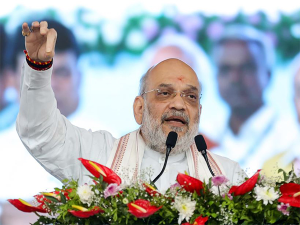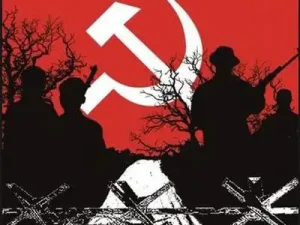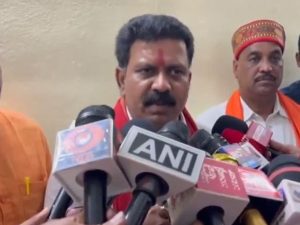Chhattisgarh – In a landmark achievement in India’s three-decade battle against Naxalism, Basavaraju Naxal Leader and General Secretary of CPI (Maoist) has been eliminated in a major security operation in Chhattisgarh’s Abujhmad forests. Union Home Minister Amit Shah confirmed that Nambala Keshav Rao, alias Basavaraju, was killed alongside 26 other Maoists in what marks the first time in thirty years that a general secretary-ranked leader has been neutralized by Indian security forces.
Historic Elimination of Top Basavaraju Naxal Leader

The elimination of Basavaraju Naxal Leader represents a watershed moment in India’s counter-insurgency operations. Home Minister Amit Shah described the 71-year-old militant as the “backbone” of the Maoist movement, emphasizing the significance of his elimination in the ongoing battle against left-wing extremism.


“Today, in an operation in Narayanpur, Chhattisgarh, our security forces have neutralized 27 dreaded Maoists, including Nambala Keshav Rao, alias Basavaraju, the general secretary of CPI-Maoist, topmost leader, and the backbone of the Naxal movement,” Shah announced in his official statement.
The Basavaraju Naxal Leader had been appointed as the new general secretary of the banned Communist Party of India (Maoist) in 2018, making his elimination particularly significant for India’s security establishment.
Also Read: YouTuber Jyoti Malhotra Confession Exposes Talks With Pakistan Officials Before Pahalgam Attack
Prime Minister Modi Hails Security Forces Success
Prime Minister Narendra Modi expressed pride in the security forces for their “remarkable success” in eliminating the Basavaraju Naxal Leader. In his post on social media platform X, Modi stated, “Our Government is committed to eliminating the menace of Maoism and ensuring a life of peace and progress for our people.”
The Prime Minister’s statement underscores the government’s determination to completely eradicate Naxalism from Indian territory. The successful operation against Basavaraju Naxal Leader serves as a significant step toward achieving this objective.
Background of Basavaraju Naxal Leader
The eliminated Basavaraju Naxal Leader was among the most elusive militant commanders in the country, with a bounty of ₹1.5 crore placed on his head by security agencies. A veteran of the Maoist movement since the 1970s, he had been operating underground for nearly five decades.
Born in Jiyannapeta village in Srikakulam district of Andhra Pradesh, the Basavaraju Naxal Leader was a BTech graduate from the Regional Engineering College in Warangal. Despite his educational background, he chose the path of armed insurgency, leaving his hometown in the late 1970s to join the Maoist movement.
Throughout his militant career, Basavaraju Naxal Leader used multiple aliases including Ganganna, Prakash, Krishna, Vijay, Darapu Narasimha Reddy, and Narasimha to evade capture by security forces.
Operational Areas and Activities

The primary operational areas of Basavaraju Naxal Leader included Chhattisgarh, Telangana, and parts of Maharashtra. Law enforcement agencies notably did not possess any recent photographs of him, highlighting his exceptional ability to remain underground and avoid detection.
Investigations revealed that Basavaraju Naxal Leader owned no property in his hometown, demonstrating his complete commitment to the underground lifestyle. According to sources, he had been camping in the dense Abujhmaad forests for at least eight years before his elimination.
Rise Through Naxal Hierarchy
The journey of Basavaraju Naxal Leader through the militant hierarchy began with his crucial role in forming the Communist Party of India Marxist-Leninist People’s War (CPIMLPW) in Andhra Pradesh in 1980. This marked the beginning of his significant influence within the Maoist movement.
In 1987, Basavaraju Naxal Leader, along with other senior commanders such as Ganapathy and the late Kishanji, reportedly received specialized training in ambush tactics and explosives from former Tamil rebels in the forests of Abujhmad, Bastar. This training enhanced his tactical capabilities and made him more dangerous to security forces.
The Basavaraju Naxal Leader continued his ascent within the organization when he was elected to the central committee of CPIMLPW in 1992. His leadership abilities and strategic acumen were recognized by his peers, leading to greater responsibilities within the movement.
Formation of CPI (Maoist) and Leadership Role


Following the 2004 merger of CPIMLPW and the Maoist Communist Centre of India (MCCI) to form CPI (Maoist), Basavaraju Naxal Leader was appointed secretary of the Central Military Commission. This position gave him significant influence over the military operations and strategic direction of the unified Maoist organization.
The appointment of Basavaraju Naxal Leader to this crucial position demonstrated his tactical expertise and organizational capabilities. His role in the Central Military Commission made him responsible for coordinating armed operations across multiple states.
Operation Black Forest Success


Home Minister Shah revealed that the elimination of Basavaraju Naxal Leader was part of the broader Operation Black Forest. Following the completion of this operation, 54 Naxalites have been arrested and 84 Naxalites have surrendered across Chhattisgarh, Telangana, and Maharashtra.
State Home Minister Vijay Sharma provided additional details about the operation, stating that it had been ongoing for 72 hours before the successful encounter that resulted in the elimination of Basavaraju Naxal Leader and 26 other militants.
Government’s Anti-Naxal Mission Timeline
The elimination of Basavaraju Naxal Leader aligns with the Modi government’s ambitious timeline to completely eliminate Naxalism. Home Minister Shah emphasized that “The Modi government is resolved to eliminate Naxalism before the 31st of March 2026.”


This timeline demonstrates the government’s serious commitment to ending the decades-long insurgency. The successful elimination of Basavaraju Naxal Leader represents significant progress toward achieving this goal within the stipulated timeframe.
Strategic Impact on Maoist Movement
The elimination of Basavaraju Naxal Leader is expected to create a significant leadership vacuum within the CPI (Maoist) organization. As the general secretary and described “backbone” of the movement, his death will likely disrupt command structures and operational capabilities.
Security analysts believe that the elimination of Basavaraju Naxal Leader will demoralize remaining cadres and potentially accelerate the surrender process among lower-level militants. The psychological impact of losing such a senior leader cannot be understated.
Historical Significance of the Operation
Home Minister Shah emphasized the historic nature of eliminating Basavaraju Naxal Leader, noting that this marks “the first time in three decades of Bharat’s battle against Naxalism that a general secretary-ranked leader has been neutralized by our forces.”
This achievement represents a major breakthrough in India’s counter-insurgency efforts and demonstrates the improved capabilities and coordination of security forces. The successful operation against Basavaraju Naxal Leader will likely serve as a template for future anti-Naxal operations.
The elimination of Basavaraju Naxal Leader in the Bastar operation marks a turning point in India’s fight against left-wing extremism, bringing the country closer to its goal of achieving complete peace and security in affected regions.

